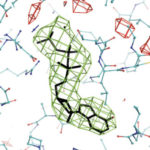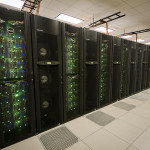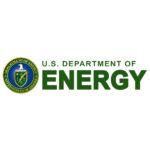The National Institutes of Health (NIH) has awarded $9.3 million to the Department of Energy’s Lawrence Berkeley National Laboratory (Berkeley Lab) to support ongoing development of PHENIX, a software suite for solving three-dimensional macromolecular structures. “The impetus behind PHENIX is a desire to make the computational aspects of crystallography more automated, reducing human error and speeding solutions,” said PHENIX principal investigator Paul Adams, director of Berkeley Lab’s Molecular Biophysics and Integrated Bioimaging Division.”
Archives for July 2017
Supercomputing by API: Connecting Modern Web Apps to HPC
In this video from OpenStack Australia, David Perry from the University of Melbourne presents: Supercomputing by API – Connecting Modern Web Apps to HPC. “OpenStack is a free and open-source set of software tools for building and managing cloud computing platforms for public and private clouds. OpenStack Australia Day is the region’s largest, and Australia’s best, conference focusing on Open Source cloud technology. Gathering users, vendors and solution providers, OpenStack Australia Day is an industry event to showcase the latest technologies and share real-world experiences of the next wave of IT virtualization.”
Using HPC to Track Massive Ice Shelves
Mellanox Technologies’ Vice President of Marketing, Gilad Shainer, discusses the University of Alaska Fairbanks and Mellanox’s high performance computing work that is tracking the Earth’s most massive ice shelves. Essentially, the simulations needed to track the massive ice sheet’s progress require extremely large resolutions, large outputs and high computational demands – all of which requires massive computational power.
Gabriel Broner Joins Rescale as VP & GM of HPC
Today HPC Cloud provider Rescale announced that Gabriel Broner has joined the company as Vice President and General Manager of High Performance Computing. “Rescale offers HPC users the possibility to instantly run simulations on large systems with the architecture of their choice, which enables companies to accelerate the pace of innovation,” said Broner. “I am very excited to join this talented group of people at Rescale who are driving the next big disruption in HPC.”
ORNL Taps D-Wave for Exascale Computing
announced they’re bringing on D-Wave to use quantum computing as an accelerator for future exascale applications. “Advancing the problem-solving capabilities of quantum computing takes dedicated collaboration with leading scientists and industry experts,” said Robert “Bo” Ewald, president of D-Wave International. “Our work with ORNL’s exceptional community of researchers and scientists will help us understand the potential of new hybrid computing architectures, and hopefully lead to faster and better solutions for critical and complex problems.”
Podcast: A Retrospective on Great Science and the Stampede Supercomputer
TACC will soon deploy Phase 2 of the Stampede II supercomputer. In this podcast, they celebrate by looking back on some of the great science computed on the original Stampede machine. “In 2017, the Stampede supercomputer, funded by the NSF, completed its five-year mission to provide world-class computational resources and support staff to more than 11,000 U.S. users on over 3,000 projects in the open science community. But what made it special? Stampede was like a bridge that moved thousands of researchers off of soon-to-be decommissioned supercomputers, while at the same time building a framework that anticipated the eminent trends that came to dominate advanced computing.”
Supercomputers turn the clock back on Storms with “Hindcasting”
Researchers are using supercomputers at LBNL to determine how global climate change has affected the severity of storms and resultant flooding. “The group used the publicly available model, which can be used to forecast future weather, to “hindcast” the conditions that led to the Sept. 9-16, 2013 flooding around Boulder, Colorado.”
Intel’s Xeon Scalable Processors Provide Cooling Challenges for HPC
Unless you reduce node and rack density, the wattages of today’s high-poweredCPUs and GPUs are simply no longer addressable with air cooling alone. Asetek explores how new processors, such as Intel’s Xeon Scalable processors, often call for more than just air cooling. “The largest Xeon Phi direct-to-chip cooled system today is Oakforest-PACS system in Japan. The system is made up of 8,208 computational nodes using Asetek Direct-to-Chip liquid cooled Intel Xeon Phi high performance processors with Knights Landing architecture. It is the highest performing system in Japan and #7 on the Top500.”
Surprising Stories from 17 National Labs in 17 Minutes
In this video, the U.S. Department of Energy gives a quick tour of all 17 National Labs. Each one comes with a surprising story on what these labs do for us as a Nation. “And they all do really different stuff. Think of a big scientific question or challenge, and one or more of the labs is probably working on it.”
Radio Free HPC Looks at AI Ethics and a Tale of Henry’s Super Heroism
In this podcast, the Radio Free HPC team learns about Henry’s first exploit as an Ethical Superhero. “After witnessing a hit-and-run fender bender, Henry confronted the culprit and ensured that the miscreant left a note on the victim’s windshield. And while we applaud Henry for his heroism, we are also very grateful that he was not shot in the process. This tale leads us into a discussion of AI ethics and how we won’t have this problem in the coming era of self-driving cars.”












